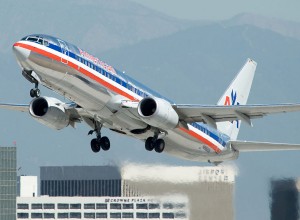Keck study highlights LAX pollution
A new air quality study done by the Keck Hospital of USC shows that jet emissions from the Los Angeles International Airport are affecting more people than previously thought.

Dirty air · The Los Angeles International Airport has over 1,500 takeoffs per day. The Keck study results reveal that the effects of jet emissions are detected as far as 10 miles away from the airport. – Photo courtesy of Creative Commons
As the third busiest airport in the United States, LAX logs more than 1,500 takeoffs per day. With that amount of traffic, the team of researchers from Keck was determined to verify just how far the jet pollution spreads.
“We had seen in previous studies that there was some suspicion that the impacts from LAX on air quality was much larger than previously measured,” said Scott Fruin, a USC assistant professor of preventative medicine and lead researcher on the project. “Indeed, when we went out, we found that the impacts were much, much larger than previously found.”
Setting out in hybrid vehicles specialized with real-time instruments to measure air quality, the team drove an area of about 10 miles downwind from the airport.
After a 29-day period, what they found confirmed their suspicions.
Instead of jet emissions being picked up only a mile or less from airports as previously thought, the researchers discovered the effects continued for up to 10 miles or more away from LAX, encompassing an area of 23 square miles.
“We found that the downwind impacts were frequently more than ten miles as opposed to say a half mile or a mile,” Fruin said. The total area covered was 23 square miles — it’s a very big swath of downwind area, a big piece of L.A. County.”
Particle number, or PN, concentrations in the 23 square mile area were double compared to the background levels, or those without the LAX contribution, the study reports. As the distance got smaller — to about two miles east of LAX — the concentration levels were almost 10 times higher.
“Therefore, the LAX should be considered one of the most important sources of PN in Los Angeles,” wrote the research team in the study, which was published in the American Chemical Society journal Environmental Science & Technology.
This high concentration of particles is potentially harmful for the health of those living in the affected area.
The most common pollutant that the team found were ultrafine particles — which, because of their small size, some studies say can reach deep into the lungs and be more toxic than larger particles.
“Jets are particularly efficient producers of ultrafine particles,” Fruin said. “One thing that we hope to come out of this study is a little bit more impetus for devoting more resources to studying the health effects of ultrafine particles.”
In addition to that, Fruin and his team hope that the study will put a greater spotlight on the effect of airport pollution for those in the impacted area.
“One thing I think it immediately proves is we have to take a new look at airports, and look at their total impacts which might be a lot bigger than say a mile or two,” Fruin said. “We also should start adding a health component that includes these larger populations and were going to be doing that ourselves at LAX.”
Funded by the National Institute of Environmental Health Sciences and the Environmental Protection Agency, the study results come at a time when Los Angeles has been declared to have the worst metropolitan area ozone pollution by the American Lung Association.
“One real key question is: Are there health impacts … due to airport emissions?” Fruin said. “That’s something were very interested in determining because the number of people impacted is so much larger than previously thought.”

